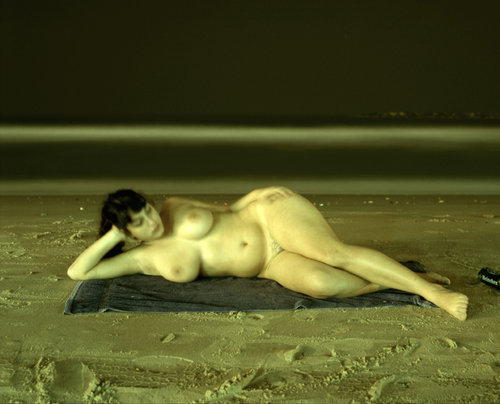Assaf Shoshan
dal 1/6/2007 al 1/7/2007
Segnalato da
1/6/2007
Assaf Shoshan
Galerie Polaris (old venue), Paris
Home. The photographer depicts the emotional and psychological consequences that come with life in contemporary Israel, and so his work must negotiate a rigid set of viewer expectations and prejudices that could easily reduce his subjects to national statistics.

Home
To paraphrase a short poem by the American poet Bill Knott, ‘The only correct response to a child’s grave / is to lie down upon it and play dead.’ Knott’s poem is not the piece of advice it would appear. Nor is it suggesting that some emotions are too deep, personal, and indigestible to be shared or symbolized. Rather it’s an assertion of poetry’s singular ability to create mystery where there would seem to be only the most brutal of facts, and, in so doing, inspire a profound imaginary relationship between those who can’t begin to understand a stranger’s suffering and those too isolated in their suffering to begin to know how to communicate.
Like Knott, the artist Assaf Shoshan seeks to bestow charisma on the emotionally charged. But unlike the poet, his medium of photography would seem better suited for blatancy than a complex representation. There’s also the problem that, by choosing to depict the emotional and psychological consequences that come with life in contemporary Israel, Shoshan’s work must negotiate a rigid set of viewer expectations and prejudices that could easily reduce his subjects to national statistics.
Society tends to equate truth with artlessness. Photographers are historically considered the most reliable chroniclers of wars, disasters, and mass impact events exactly because they can flatten and minimize extraordinarily confusing realities. For all their emotional power, currency, and fascination with the truth, Shoshan’s photographs are most defiantly artworks. He declines the photographer’s dictum to deliver great pictures no matter the cost to the subject.
Instead he evinces such an unwavering respect for the people and places he depicts that his images seem a celebration of their privacy. In fact, even with foreknowledge of the topicality of Shoshan’s work, it’s possible to marvel and wonder at their exquisite aestheticism, at their marriage of the dark, endangered, and forbidding with an atmosphere so intimate that his tenderness seems to steam up each picture as one contemplates it like the windows of a cold, newly inhabited car.
Shoshan’s work is remarkably free of the tropes and tricks that preoccupy most contemporary photographers. If anything, its artfulness is better traced to mediums with far loftier ambitions. So an eerily lighted, cave-like neighborhood street in one photograph calls to mind the paranormal hallway in David Lynch’s ‘Lost Highway,’ and the tense young night swimmers on a Tel Aviv beach in another image seem to have been painted there for centuries.
Shoshan grew up in the Israeli village of Motsa, and its environs and inhabitants remain the psychological center of his work. When he photographs friends and family members, the images feel wishful and protective, the world they show idealized and highly composed. When Shoshan ventures too far from home, say in his compelling late night photographs of an isolated worker’s home and a deserted army camp, his camera lurks in the shrubbery like an animal whose eyes can only detect the things it understands and needs.
Ultimately, Assaf Shoshan's photography is too assured and singular, too mesmerizing and expansive in its effect to be pigeonholed. Comparing his work to the similarly cinematic photographs of contemporaries like Gregory Crewdson or Tracey Moffatt is helpful in distinguishing his more forceful, less attenuated pursuit of emotional truth, just as viewing it in contrast to standard war photography highlights the unabashed classicism and painterliness of his style. But as useful as such associations can be when introducing a new artist, they give only the vaguest directions into the matter of Shoshan's achievement, which lies in the unprecedented beauty, ambiguity, and soulfulness he conjures from a world we had previously thought so black and white.
Dennis Cooper, 2006
Opening june2, 2007
Galeria Polaris
8 rue Saint-Claude - Paris
Free admission



